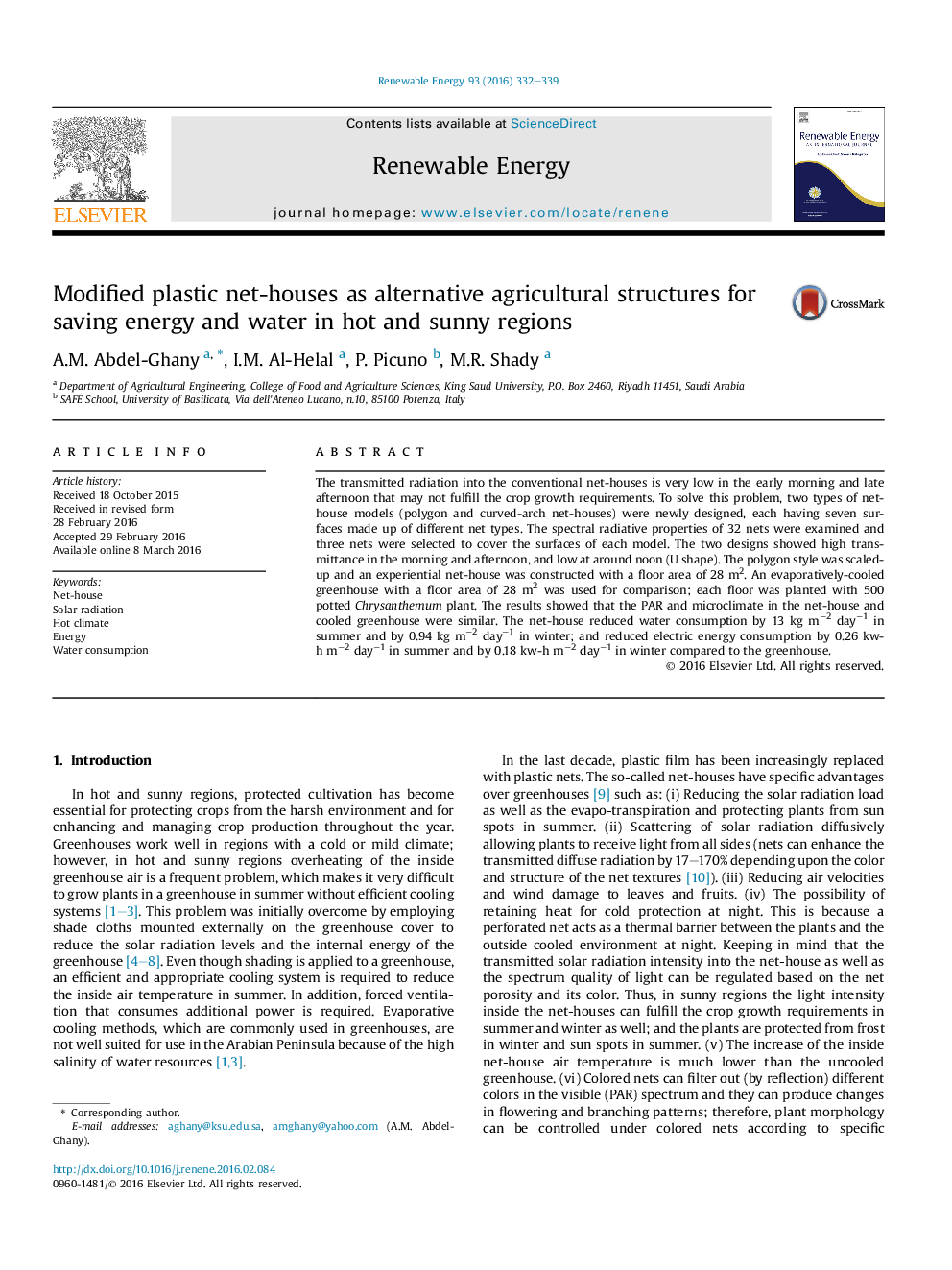| Article ID | Journal | Published Year | Pages | File Type |
|---|---|---|---|---|
| 299772 | Renewable Energy | 2016 | 8 Pages |
•Two types of net-house (polygon and curved-arch) were newly developed.•Their transmittance pattern was modified to a parabolic-shape, i.e., the most suitable in the arid climate.•They provided a microclimate was similar to that in the cooled greenhouse.•They reduced water and electric energy consumptions significantly.•They can effectively replace the greenhouses in arid regions.
The transmitted radiation into the conventional net-houses is very low in the early morning and late afternoon that may not fulfill the crop growth requirements. To solve this problem, two types of net-house models (polygon and curved-arch net-houses) were newly designed, each having seven surfaces made up of different net types. The spectral radiative properties of 32 nets were examined and three nets were selected to cover the surfaces of each model. The two designs showed high transmittance in the morning and afternoon, and low at around noon (U shape). The polygon style was scaled-up and an experiential net-house was constructed with a floor area of 28 m2. An evaporatively-cooled greenhouse with a floor area of 28 m2 was used for comparison; each floor was planted with 500 potted Chrysanthemum plant. The results showed that the PAR and microclimate in the net-house and cooled greenhouse were similar. The net-house reduced water consumption by 13 kg m−2 day−1 in summer and by 0.94 kg m−2 day−1 in winter; and reduced electric energy consumption by 0.26 kw-h m−2 day−1 in summer and by 0.18 kw-h m−2 day−1 in winter compared to the greenhouse.
